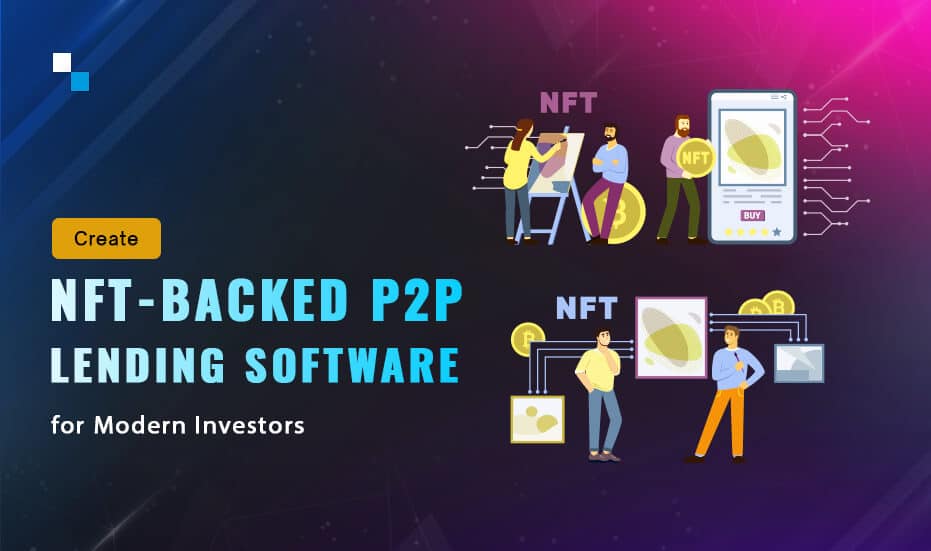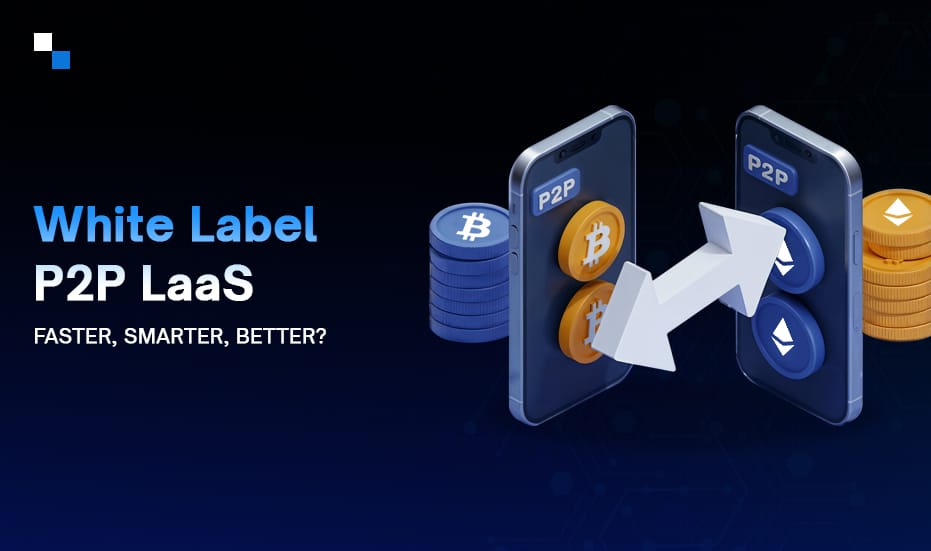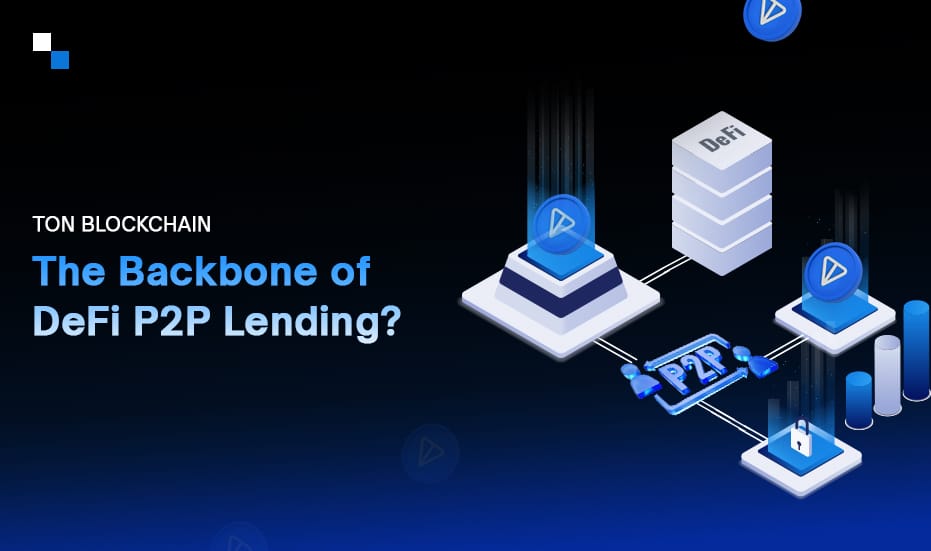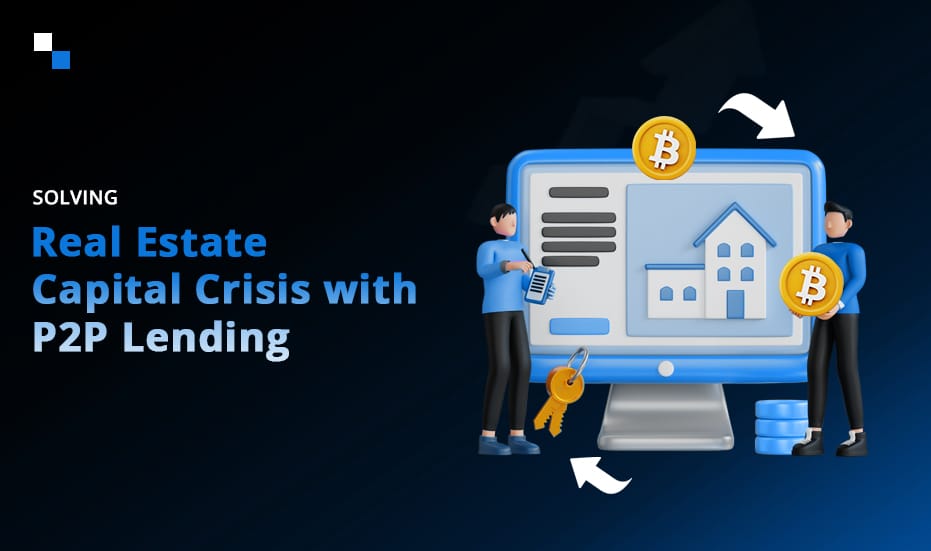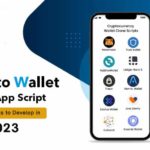In the ever-evolving landscape of blockchain technology, Non-Fungible Tokens (NFTs) have captured the world’s attention with their unique ability to represent ownership of digital assets. Beyond the realm of digital art and collectibles, NFTs are now making waves in the lending industry, paving the way for a new era of Peer to Peer Lending Software development.
By leveraging the value locked within NFTs, individuals can now access liquidity in an unprecedented manner, opening up a plethora of opportunities for investors and borrowers alike.
The Intersection of NFTs and P2P Lending Platform Software
NFT holders can obtain liquidity through NFT loans without selling their holdings. The cryptocurrency industry is seeing increased interest in the emerging trend of NFT lending. Users can diversify their portfolios and maximize the return on their digital investments by borrowing an NFT.
Both lenders and borrowers may benefit from taking out an NFT loan. Non-fungible tokens (NFTs) can be lent by owners for quick cryptocurrency or cash funds, while borrowers can earn interest on the NFT without actually holding it.
The convergence of NFTs and P2P lending brings forth a groundbreaking approach to borrowing and lending. Traditionally, lenders rely on collateral assets to mitigate risk and secure their investments. With NFT-backed Peer to Peer Lending Software, borrowers can now pledge their digital assets as collateral, unlocking the potential value stored within their NFT holdings. This new model of lending enables borrowers to access immediate liquidity without having to liquidate their NFTs, providing a win-win situation for both parties involved.
Mitigating P2P Lending Risk through Tokenization
Tokenization lies at the core of NFT-backed P2P Lending Platform Software. By transforming NFTs into digital tokens, lenders can easily assess the value, ownership, and transferability of the collateral. Smart contracts facilitate the automation of loan terms, ensuring seamless and transparent transactions. In the event of default, lenders can swiftly take possession of the NFT collateral through the predetermined contract terms, minimizing risk and ensuring the integrity of the lending process.
Let’s understand how tokenization helps mitigate P2P lending risk:
While using an NFT-backed Peer to Peer Lending Software, tokenization allows for precise and reliable asset valuation. By representing assets as tokens on the blockchain, their ownership, value, and transaction history can be easily recorded and verified. This transparency enables lenders to accurately assess the collateral’s worth, minimizing the risk of overestimation or potential fraud.
Additionally, tokenization enhances the enforceability of loan agreements. Smart contracts, integrated with the tokenized assets, automate the lending process, ensuring that the terms and conditions of the loan are transparent, tamper-proof, and self-executing. This reduces the risk of default or non-compliance, as the smart contract enforces repayment schedules and collateral release conditions.
Tokenization also facilitates fractional ownership and diversification of risk. Through fractionalized token ownership, multiple lenders can participate in financing a single loan, spreading the risk across a broader group of investors. This diversification lowers the exposure of individual lenders to default risk, enhancing the overall stability of the P2P Lending Platform Software ecosystem.
Moreover, tokenization provides increased liquidity and secondary market opportunities. By tokenizing assets, they can be easily traded and transferred between parties, allowing lenders to exit their positions or transfer their loan exposure if desired. This liquidity feature mitigates the risk associated with illiquid assets and provides an avenue for lenders to manage their risk exposure effectively.
Main characteristics of NFT backed Peer to Peer Lending Software
NFT-backed Peer-to-Peer (P2P) lending software is a specialized platform that combines the features of P2P lending with the unique characteristics of Non-Fungible Tokens (NFTs). Here are some key characteristics of NFT-backed P2P lending software:
- NFT Collateralization: The software enables borrowers to pledge their NFTs as collateral for loans. It facilitates the tokenization of NFTs and provides a mechanism to assess their value, ownership, and transferability. The software ensures seamless integration between the NFT collateral and the lending process.
- Smart Contract Automation: NFT-backed Peer to Peer Lending Software leverages smart contracts to automate the loan process. Smart contracts define the loan terms, including interest rates, repayment schedules, and collateral release conditions. They facilitate secure and transparent transactions between lenders and borrowers.
- Risk Assessment and Due Diligence: The software incorporates robust risk assessment mechanisms to evaluate the collateral’s value and mitigate risks. It may utilize external data sources, such as oracles, to gather information about NFT prices and market trends. Comprehensive due diligence processes are implemented to verify the authenticity and ownership of NFT collateral.
- Borrower-Lender Matching: The P2P Lending Platform Software includes a matching system that connects borrowers and lenders based on their preferences, loan requirements, and risk profiles. It enables lenders to evaluate borrower profiles, collateral details, and loan requests before committing to lending. Conversely, borrowers can review lender profiles and select the most suitable lending offers.
Harness the Power of NFTs With P2P Lending Software
Schedule Free Demo- Secure Storage and Transfer of NFTs: NFT-backed Peer to Peer Lending Software ensures the secure storage and transfer of NFT collateral throughout the lending process. It employs encryption techniques and decentralized storage solutions to protect NFT assets from unauthorized access or loss. The software enables the smooth transfer of NFT ownership between parties upon successful loan repayment.
- Compliance and Regulatory Considerations: NFT-backed P2P lending software incorporates necessary compliance measures to adhere to relevant regulations, such as Know Your Customer (KYC) and Anti-Money Laundering (AML) procedures. It helps to ensure the legitimacy of borrowers and lenders on the platform and maintain a safe lending environment.
- User-Friendly Interface: The software provides a user-friendly interface for borrowers and lenders to interact with the platform. It offers intuitive dashboards for users to manage their accounts, monitor loan status, track the collateral value, and perform necessary actions such as loan applications, repayments, and collateral releases.
- Reporting and Analytics: NFT-backed P2P Lending Platform Software includes reporting and analytics tools that provide insights into the platform’s performance, loan portfolio, repayment trends, and collateral valuation. These features assist lenders in making informed decisions and monitoring the overall health of their lending activities.
Steps for developing NFT-backed P2P lending software
Developing NFT-backed Peer-to-Peer (P2P) lending software requires careful planning and a systematic approach. Here are the steps involved in the development process:
- Define Requirements and Scope
1. Identify the specific features and functionalities required for the NFT-backed P2P lending software.
2. Determine the scope of the P2P Lending Platform Software, including the supported NFT platforms, loan types, collateralization options, and user roles. - Design User Interfaces
1. Create user-friendly interfaces for borrowers, lenders, and administrators.
2. Design intuitive dashboards that allow users to manage their accounts, view loan status, and collateral details, and perform necessary actions. - Build the Backend Infrastructure
1. Develop the core infrastructure to handle user authentication, security measures, data storage, and retrieval.
2. Implement smart contract functionality for loan terms, collateral management, and automated processes. - Integrate NFT Platforms
1. Integrate with popular NFT platforms, such as Ethereum-based marketplaces like OpenSea or specific blockchain networks supporting NFTs.
2. Enable the retrieval of NFT data, including ownership, metadata, and market values, through API integrations or blockchain interactions. - Implement Smart Contract Logic
1. Design and develop smart contracts that govern loan terms, collateral management, interest rates, repayment schedules, and default conditions.
2. Ensure the secure execution of smart contracts and automate loan-related processes through predefined rules and conditions. - Enable Collateral Evaluation
1. Incorporate mechanisms to assess the value and authenticity of NFT collateral, potentially utilizing oracles or external data sources for market price feeds.
2. Implement risk assessment algorithms and due diligence processes to evaluate collateral suitability and mitigate risks. - Implement Borrower-Lender Matching
1. Develop algorithms and matching mechanisms to connect borrowers and lenders based on their preferences, loan requirements, and risk profiles.
2. Enable lenders to review borrower profiles, collateral details, and loan requests, and provide lending offers accordingly. - Ensure Compliance and Security
1. Implement necessary compliance measures, such as Know Your Customer (KYC) and Anti-Money Laundering (AML) procedures, to ensure regulatory compliance.
2. Employ robust security measures to protect user data, prevent unauthorized access, and secure the storage and transfer of NFT collateral. - Test and Debug
1. Conduct thorough testing of the Peer to Peer Lending Software to identify and resolve any functional or security issues.
2. Perform end-to-end testing, including the interaction between users, smart contracts, and NFT platforms. - Deployment and Maintenance
1. Deploy the NFT-backed P2P Lending Platform Software on a reliable hosting platform or blockchain network.
2. Continuously monitor the software’s performance, address any bugs or vulnerabilities, and release regular updates to enhance user experience and security.
Conclusion
NFT-backed P2P Lending Platform Software represents an exciting intersection of two groundbreaking technologies, creating new opportunities for individuals in the digital age. By unlocking liquidity through NFT collateral, borrowers gain access to much-needed funds, while lenders diversify their portfolios and tap into the thriving NFT market. As this sector continues to evolve and address challenges, it has the potential to revolutionize traditional lending systems, democratize access to capital, and shape the future of decentralized finance.
Developing NFT-backed Peer to Peer Lending Software requires expertise in blockchain development, smart contracts, user interface design, and security practices. We, at Antier, understand the significance of ensuring scalability, reliability, and compliance throughout the development process to create a robust and user-friendly lending platform. Get in touch with us today!
